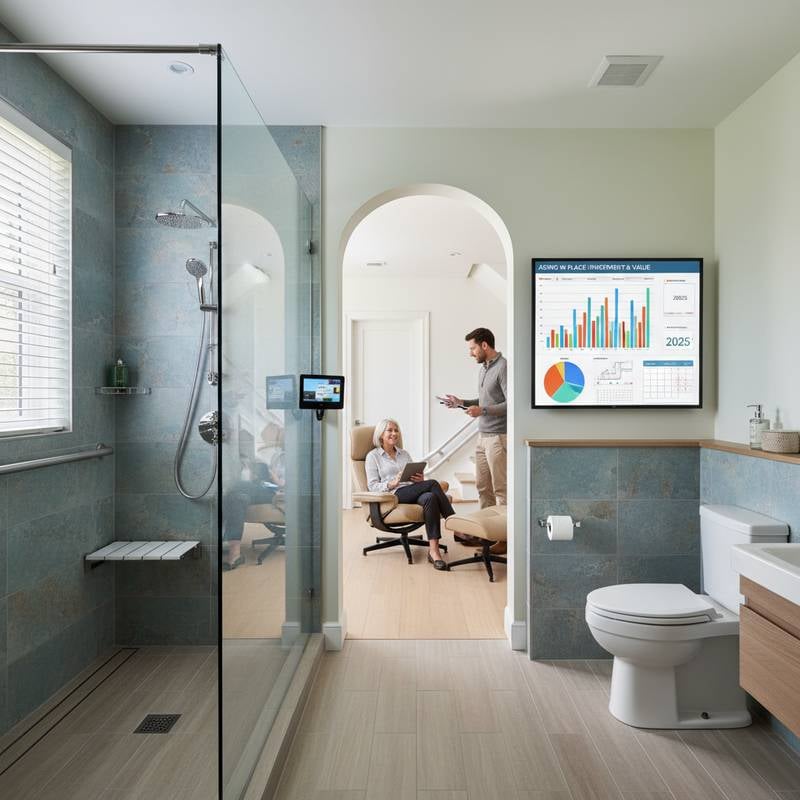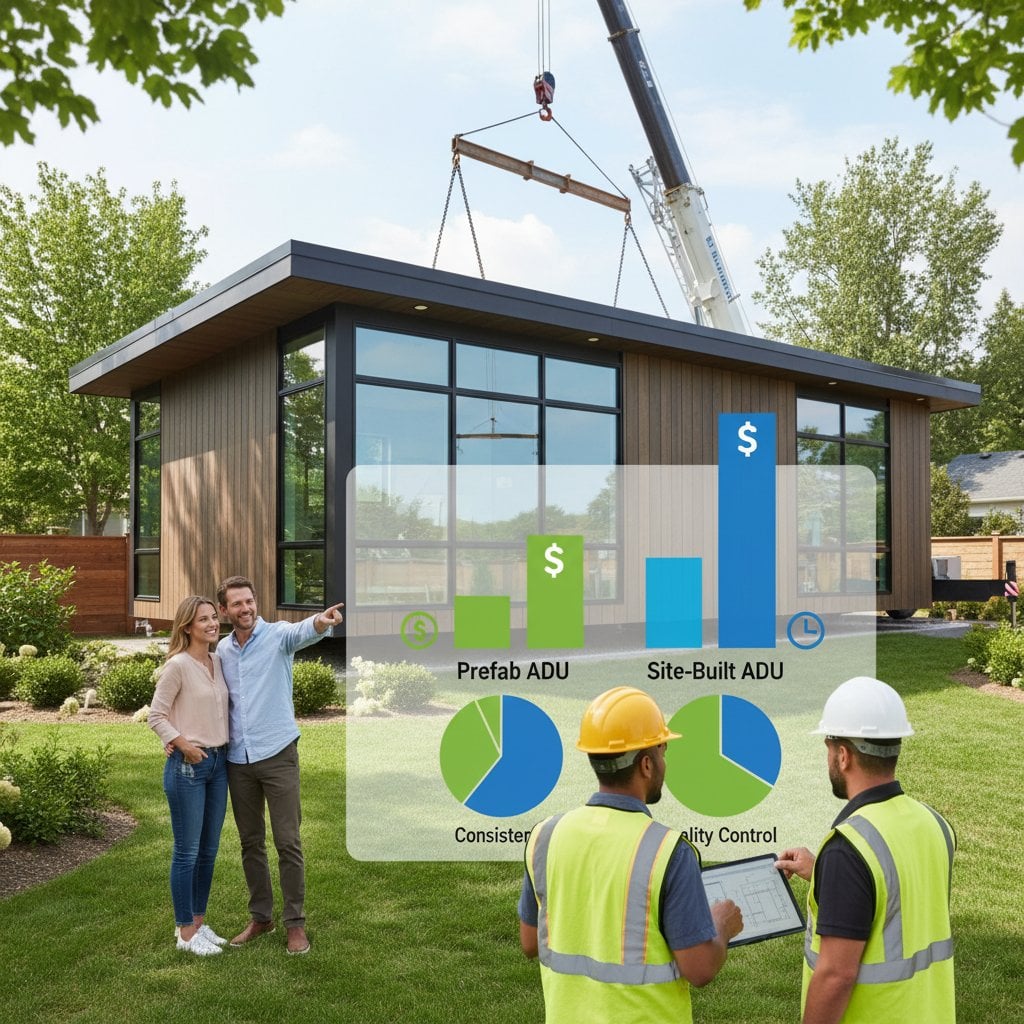Universal Design Remodels for Aging in Place
Universal design principles focus on creating environments that accommodate people of all ages, abilities, and sizes. These remodels emphasize flexibility, so spaces evolve with changing needs without sacrificing style or functionality. Homeowners benefit from increased safety, reduced physical strain, and preserved independence, making it possible to remain in familiar surroundings for decades.
This article outlines essential remodel ideas, starting with foundational elements and progressing to specific room enhancements. Each recommendation includes practical implementation details, cost considerations, and professional advice. By prioritizing these updates, individuals can foster a home that supports wellness and autonomy throughout life stages.
Essential Focus Areas for Universal Design
Universal design remodels target high-impact zones where mobility and daily routines intersect. The following areas warrant attention to maximize benefits:
- Entryways and transitions: Eliminate barriers for seamless access.
- Kitchens: Optimize workflows for cooking and meal preparation.
- Bathrooms: Enhance hygiene and relaxation with slip-resistant, easy-to-use fixtures.
- Lighting and flooring: Improve visibility and stability underfoot.
- Technology and safety features: Integrate automation for effortless control.
Addressing these systematically ensures comprehensive coverage and long-term value.
Enhancing Entryways for Effortless Access
Entryways serve as the gateway to the home, so modifications here prevent accidents and ease arrivals. Install no-step thresholds or ramps at exterior doors to accommodate wheelchairs or walkers without abrupt changes in level. Widen doorways to at least 32 inches for clear passage, and add lever-style handles that require minimal grip strength.
Consider adding a covered porch or portico for weather protection during entry. These changes not only boost accessibility but also elevate curb appeal. For homes with multiple levels, evaluate stairlifts or platform lifts as durable alternatives to full elevator installations.
Cost range: Threshold ramps and door widening typically cost 1,500 to 4,000 dollars, depending on materials and site conditions.
DIY vs Pro: Simple hardware swaps suit handy homeowners, while structural alterations demand licensed contractors to ensure code compliance.
Kitchen Adaptations for Independent Living
Kitchens demand thoughtful updates to support safe food preparation and social gatherings. Adjustable-height countertops, which lower or raise via electric mechanisms, allow standing, seated, or wheelchair use. Pair these with open shelving or pull-down cabinet organizers to bring items at eye level, minimizing stretching or stooping.
Incorporate pull-out pantry shelves and lazy Susans in corner cabinets for intuitive storage. Front-mounted controls on appliances, such as ovens and dishwashers, simplify operation for those with reduced dexterity. These features maintain a modern kitchen aesthetic while prioritizing usability.
Faucets, Sinks, and Illumination Strategies
Select single-lever faucets with touchless sensors to reduce twisting motions and prevent scalding risks. Undermount sinks with shallow basins facilitate easier cleaning and reduce back strain during dishwashing. Install layered lighting, including overhead pendants for general illumination and under-cabinet LEDs for precise task areas, to eliminate shadows and enhance safety.
Dimmable options allow customization based on time of day or activity. Recessed fixtures in ceilings distribute light evenly, avoiding harsh glare. Such setups not only aid visibility but also create inviting atmospheres for family meals.
Cost range: Faucet and sink upgrades range from 500 to 2,000 dollars; lighting installations add 800 to 3,000 dollars.
DIY vs Pro: Faucet replacements are straightforward for DIY, but electrical lighting work requires certified electricians.
Bathroom Transformations for Safety and Comfort
Bathrooms pose significant slip and fall hazards, making universal design essential for confident daily routines. Opt for curbless, roll-in showers with built-in benches and grab bars integrated into walls for discreet support. Non-slip flooring, such as textured porcelain tiles, provides traction without compromising cleanliness.
Install raised toilet seats or comfort-height fixtures to ease sitting and standing. Towel bars and shelving at various heights accommodate different reach capabilities. Heated floors add luxury while warming toes during colder months, promoting overall relaxation.
Wide vanities with open space underneath allow knee clearance for seated grooming. Wall-mounted sinks free up floor area for maneuvering. These elements combine practicality with spa-like serenity, ensuring bathrooms remain havens of personal care.
Cost range: Shower conversions cost 5,000 to 12,000 dollars; toilet and flooring updates range from 1,000 to 4,000 dollars.
DIY vs Pro: Flooring installation is DIY-friendly with proper tools, but plumbing and shower framing necessitate professional expertise.
Optimizing Lighting, Flooring, and Hallways
Consistent lighting throughout the home prevents disorientation and fatigue. Place motion-activated lights in hallways and stairwells to illuminate paths automatically upon approach. Use warm-toned bulbs to reduce eye strain, and install switches at 48-inch heights for wheelchair access.
Flooring choices influence stability and ease of maintenance. Select low-pile carpeting or resilient vinyl in living areas to cushion steps without tripping risks. Avoid glossy surfaces in high-traffic zones; instead, choose matte finishes that enhance grip.
In bedrooms and closets, full-length mirrors and adjustable closet rods facilitate dressing independently. These subtle enhancements create fluid navigation, supporting active lifestyles.
Cost range: Lighting systems run 1,000 to 5,000 dollars; flooring replacements average 3 to 7 dollars per square foot.
DIY vs Pro: Basic lighting kits suit DIY, but whole-home rewiring or subflooring work calls for specialists.
Integrating Technology and Safety Upgrades
Smart home technologies amplify universal design by automating routine tasks. Voice-controlled systems adjust lights, locks, and thermostats via simple commands, ideal for limited mobility. Automated shades respond to sunlight or schedules, maintaining privacy and temperature control.
Install emergency alert buttons in key rooms connected to medical services. Smoke and carbon monoxide detectors with strobe lights and bed shakers alert hearing-impaired residents. Reinforced doors and windows with easy-lock mechanisms bolster security without complexity.
These integrations future-proof the home, blending innovation with reliability. Energy-efficient choices, like smart thermostats, also lower utility bills over time.
Cost range: Basic smart devices start at 200 dollars per unit; full systems reach 2,000 to 10,000 dollars.
DIY vs Pro: App-based setups are user-friendly, but wired security installations require professionals.
Engaging Professionals for Quality Results
Certain remodel aspects exceed typical DIY skills, particularly those involving infrastructure. Electrical upgrades, such as rewiring for smart features, demand licensed electricians to avoid hazards. Plumbing reroutes for accessible fixtures require plumbers familiar with universal standards.
Seek contractors certified by organizations like the National Kitchen and Bath Association or those specializing in aging-in-place designs. Review portfolios for similar projects and verify adherence to Americans with Disabilities Act guidelines. Clear contracts outlining timelines, warranties, and change orders protect investments.
Consult occupational therapists for personalized assessments, ensuring modifications align with specific health needs. Professional input guarantees durability and compliance, yielding spaces that perform reliably.
Sustaining and Valuing Your Remodeled Home
Universal design investments pay dividends in comfort, equity, and peace of mind. Accessible homes attract diverse buyers, often commanding premium prices in resale markets. Routine maintenance, like sealing grout or updating batteries in sensors, preserves functionality.
Begin updates in most-used areas, such as the kitchen or bathroom, to realize immediate gains. Obtain quotes from three or more contractors to compare value. Select durable, low-maintenance materials that harmonize with existing decor.
Through strategic planning, homeowners craft residences that adapt seamlessly to evolving requirements. These remodels not only extend independent living but also enrich daily experiences with thoughtful, inclusive design.











